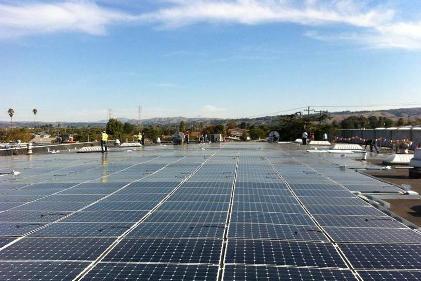
|
| Bernie Pacyniak |
On several occasions in the past, I’ve discussed the push toward lean manufacturing by several confectionery companies.
Candy makers have had to focus on improving efficiencies to survive, faced with skyrocketing commodity costs and across-the-board reluctance to rising prices.
In doing so, many have recognized that saving the environment can go hand in hand with making their manufacturing plants more efficient and their bottom lines tic up — essentially dovetailing lean with green.
While most of us would like to believe this represents a higher environmental calling, the cynic in me keeps saying that it’s simply a case of economics and growing social and retailer pressure. But hey, there’s nothing wrong with that.
A recent 2011 study by the Material Handling Industry of America reveals that more than nine in 10 executives (92%) surveyed believe sustainable initiatives can save both money and resources, not to mention the planet.
Another study by the Aberdeen Group, as cited in Green Manufacturer magazine, a specialty trade publication launched by the Fabricators & Manufacturers Association, drives home the benefits of green manufacturing practices.
Accordingly, “best in class” manufacturers — meaning those committed to implementing sustainability in their operations and not just “greenwashing” — were able to reduce their carbon footprint by 9%. Simultaneously, those same companies were able to cut energy costs by 6%, facilities costs by 7%, paper costs by 10% and transportation/logistics costs by 7%.
I’m happy to say that confectionery manufacturers are also going green. In our October issue of Candy Industry, we’re highlighting examples of several manufacturers who have committed to the green movement.
Although, because of space and time constraints, we were only able to cite a handful of companies, I sense there are many more candy operations that are gung-ho about reducing their carbon footprint. What’s even more telling is that the examples range from completely new facilities to older plants that are being upgraded.
Kim Chocolates B.V. in Tienen, Belgium, certainly created a blueprint on how to build a true “green” field facility. From solar panels on the roof, which provide more than 20% of the plant’s energy needs to 100% recoverable building materials, from bio-mass wastewater treatment to energy-saving lighting, the Tienen plant demonstrates how a midsized manufacturer can compete with multinationals in reducing costs and waste.

|
| Solar panels at Annabelle Candy Co. |
Then there’s Annabelle Candy Co., which dates back to 1950 and is one of the largest, independently owned candy bar manufacturers in the United States. The Hayward, Calif.-based manufacturer of Rocky Road, Big Hunk, Abba-Zaba, Look and U-NO candy bars installed a solar panel array on its roof late last year.
In doing so, the company expects to save $136,766 —an amazing 90% offset of the current commercial electricity bill. During the next 25 years, Annabelle Candy Co. expects to save more than $6.5 million in direct commercial electricity costs.
As Susan Gamson Karl, Anna belle Candy Co.’s president and ceo explains, “With the financial challenges we currently face in this economic environment, we feel fortunate to have found a way to offset our operating costs and help conserve our precious resources, while continuing to provide jobs for our wonderful employees.”
And then there’s Marich Confectionery Co. in Hollister, Calif. When the van Dam family built a new facility in 1998, they, too, focused on implementing energy-saving construction methods, everything from a reflective roof system to high-performance glass windows, from flexible cooling units to efficient lighting.
An aggressive recycling and reduced packaging initiative has helped them reduce their carbon footprint as well, while a commitment to local sourcing also plays a role.
Add to that the van Dams’ personal memento to their father, the planting of Redwood trees, and it’s inspirational to say the least.
“Our dad gardened as a hobby and loved plants and trees, especially Redwood trees,” says Brad van Dam, president and ceo. “Trees are nature’s natural carbon scrubbers and since our dad was big on plants, we planted lots of them at our new facility, including his favorite Redwoods.”
There are more than 75 trees on the five acres the Marich Confectionery facility occupies, along with ribbons of shrubs and flowering plants.
Efforts like these almost make the greenwashing cynic in me disappear.

